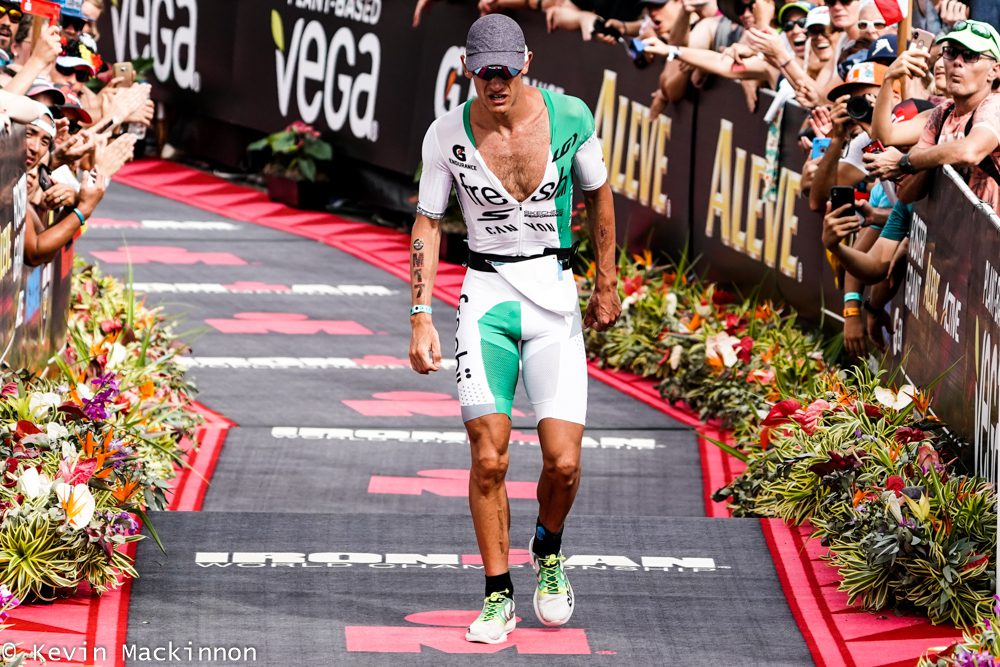Counting back to Kona: 2019 – Deutschland domination
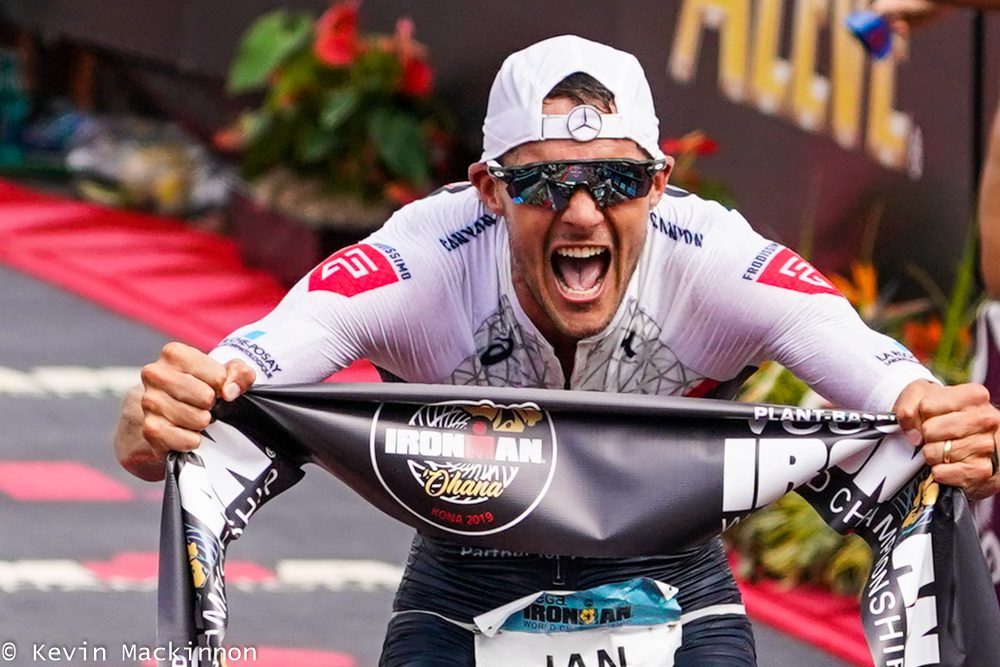
They love their Ironman champions in Germany and, in 2019, the country got two chances to celebrate as Jan Frodeno and Anne Haug captured the titles. We were on hand to cover the exciting day of racing – here’s the story that appeared in the November issue of Triathlon Magazine Canada:
Frodeno takes more than just the title
When Jan Frodeno woke up on race morning, he hadn’t intended to find himself looking at his twitter account, but somehow he ended up there. The two-time Kona champ had walked most of the marathon two years ago with back issues. Last year he had to watch from the sidelines with a stress fracture as his countryman, Patrick Lange, become the first man to break the eight-hour barrier on the Big Island. He usually avoids social media during race week, but accidentally hit the Twitter app on his phone.
The tweet was from the 2012 Ironman world champion Pete Jacobs, addressed to everyone racing at the Ironman World Championship.
“Be strong, be present, be grateful and be confident,” it read.
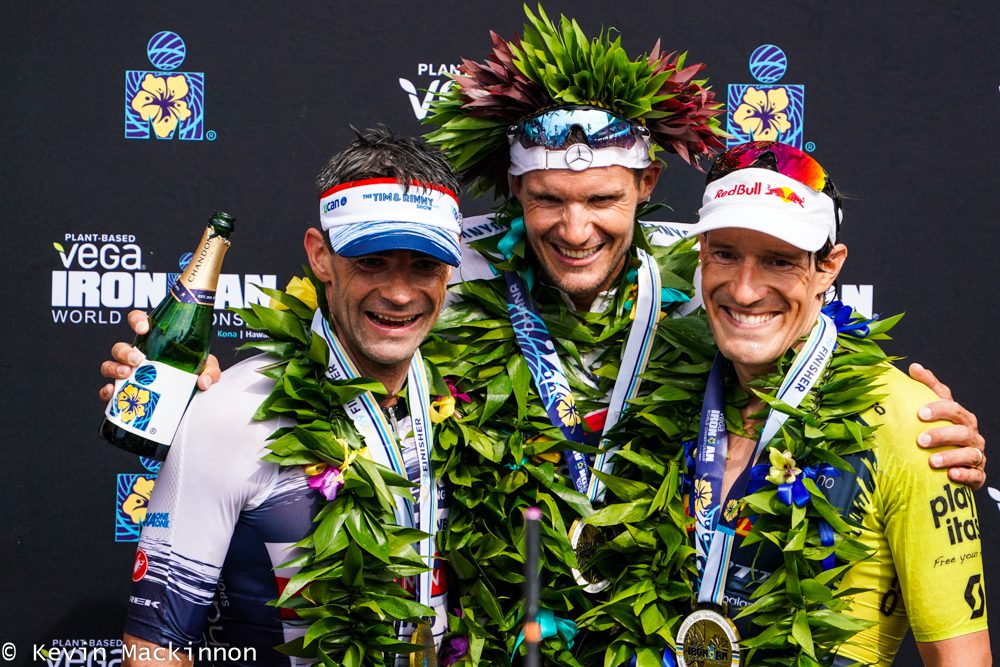
“Those four things stuck with me for the whole day,” Frodeno said after his record-setting performance that saw him finish in 7:51:13, besting Lange’s record by over a minute on a day that featured considerably tougher conditions than last year.
All week long, Frodeno had been remarkably relaxed. When asked about records, he repeatedly said that he was after the title – and he meant it. Frodeno had put everything in place to succeed in Kona. He won the Ironman European Championship in Frankfurt in Kona-like heat, beating a resurgent Sebastian Kienle in the process. He’d honed his bike position and equipment in the wind tunnel, worked with the designers on a new tri suit for Kona that was better in the heat and more aerodynamic, and was even wearing prototype Asics shoes – the logos had to be painted on the week before the race.
On race day he executed the perfect race plan. Just a few seconds behind swim leader Josh Amberger and ahead of two-time Olympic gold medalist Alistair Brownlee, Frodeno would help coordinate a lead group on the bike that included his swim partners, American Tim O’Donnell and his countryman Maurice Clavel. (Patrick Lange was with the group out of the water, but would eventually drop out.)
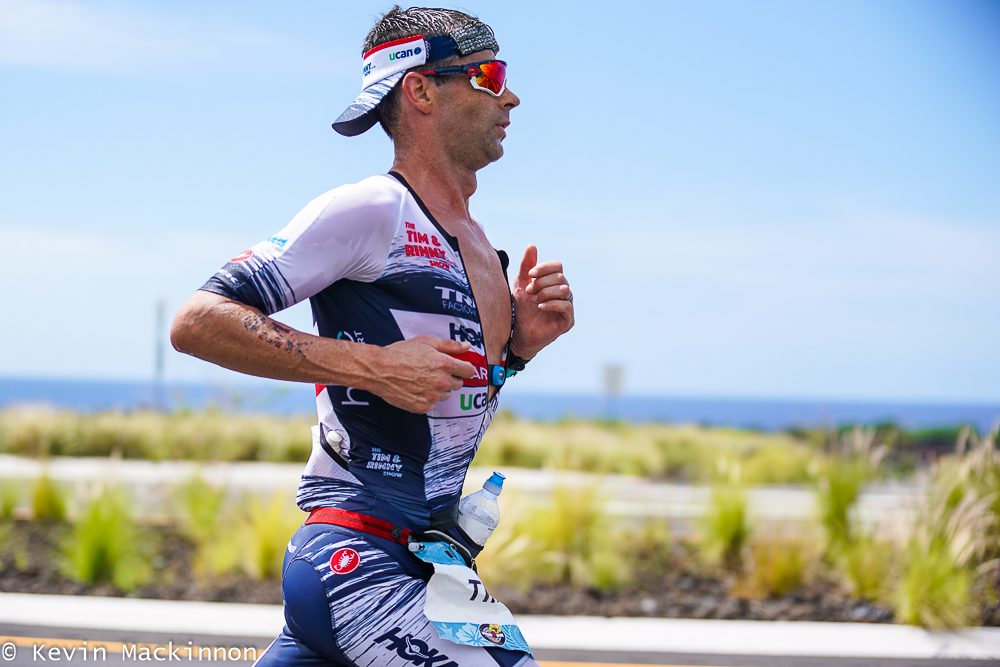
Clavel would push very hard, very early, and eventually drop off the group. Amberger was next to go. Brownlee got a flat tire, but was able to quickly get back into the mix. As the trio neared the airport on the way back to T2, Frodeno made his move.
Behind him three of the strongest cyclists in the sport couldn’t believe what was happening. Cameron Wurf broke the bike course record here two years ago, towing Lionel Sanders and Sebastian Kienle behind. This year they were back together again, flying through the field towards the front of the race.
“We got a split that we were 1:50 behind Jan,” Kienle said. “Then we caught Alistair, so I thought we were about a minute behind. Then we got into transition, and they said we were 4:30 down.”
O’Donnell hadn’t been able to stay with Frodeno, but was still ahead of the group as they started the run. He would run a 2:49 marathon to nail his runner-up finish.
Up ahead of him, Frodeno was trying to dial in a pace quick enough to get the win, but also ensuring he wouldn’t push too hard. Which is why, when he got the news from the first German to win the Ironman World Championship, Thomas Hellriegel, that he needed a 2:44 marathon to set a new course record, he wasn’t thrilled with the news.

Even though the lead car had a big clock on the top, Frodeno had no idea whether or not he was on course-record pace – he’s shortsighted and “didn’t have the remotest clue what the clock said.”
His 2:42:43 split was more than enough to set a new course record of 7:51:13, a remarkable race considering the conditions were much windier this year than last.
O’Donnell was thrilled with his sub-eight-hour performance and runner up finish.
The race for the final spot on the podium turned out to be the most interesting one of the day as the race turned into a battle of attrition. Brownlee would scamper out ahead of the rest of the chasers, only to fade as the race progressed towards the famed Energy Lab. Sanders also suffered, seemingly limping along the Queen K in survival mode. That left Kienle to soldier into third, only to find himself trying to hold off Wurf, who has improved his running dramatically this year, and Ben Hoffman, who also had to sit on the sidelines last year with a stress fracture. Hoffman would pass Wurf to move into fourth and chase Kienle to the line, ending up 50 seconds back.
Wurf continued his climb up the Kona standings with his fifth-place finish.
The day, though, belonged to Frodeno.
“I had lots of moments of gratitude that I was in this race,” he said. “I remembered how much it sucked to have to watch last year. In my 18 years as a pro, this was the day I was looking for.”
He was strong. He was present. He was grateful. He was confident. All of which helped him relax his way to a performance unlike any we’ve ever seen on the Big Island.
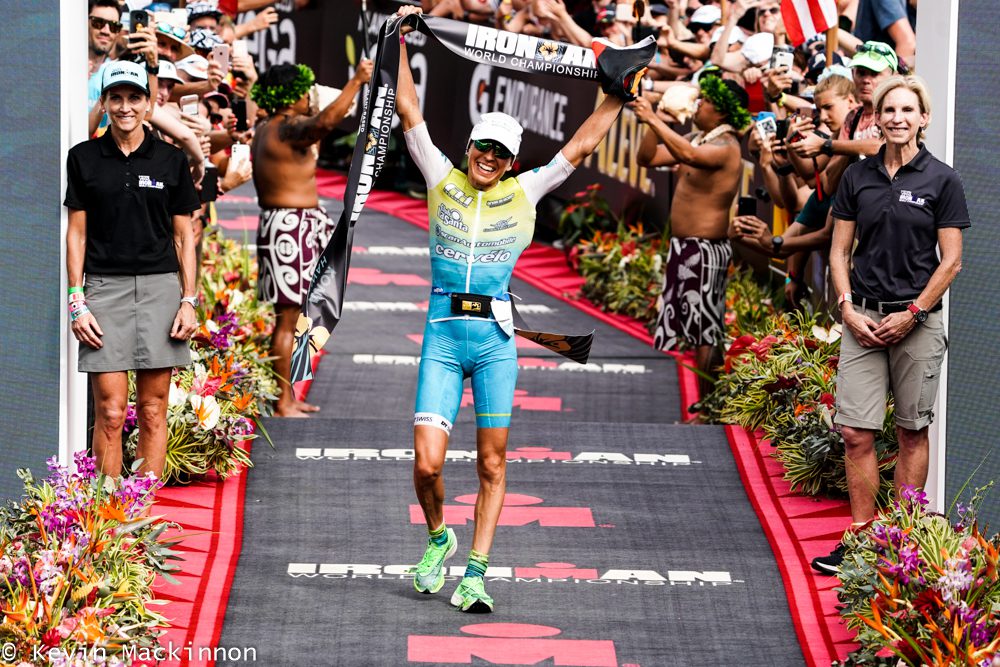
Haug Hammers
In her last 10 appearances at 70.3 or Ironman world championships, Daniela Ryf has had a grand total of one bad day – a fourth-place finish in 2016 at the 70.3 championship on the Sunshine Coast. The Swiss star has amassed five 70.3 world titles and four Kona championships in the last six years, so it was easy to call her the prohibitive favourite.
That didn’t mean the rest of the women were willing to hand her the race, though. Great Britain’s Lucy Charles-Barclay had finished second to Ryf the last few years, and right from the firing of the canon off the Kailua-Kona pier seemed determined to push Ryf to her limits. With American Lauren Brandon on her feet, Charles-Barclay exited the water in 49:02, five minutes up on the chase pack of eight that included Ryf, Australian Sarah Crowley and Germany’s Anne Haug, and then blasted out on the bike, determined to press the pace.
It wasn’t long into the ride when we started to realize that something wasn’t right with Ryf. She didn’t look comfortable riding with the chase group, and never made one of her signature drives to the front of the race that sets her apart from the rest of the women.
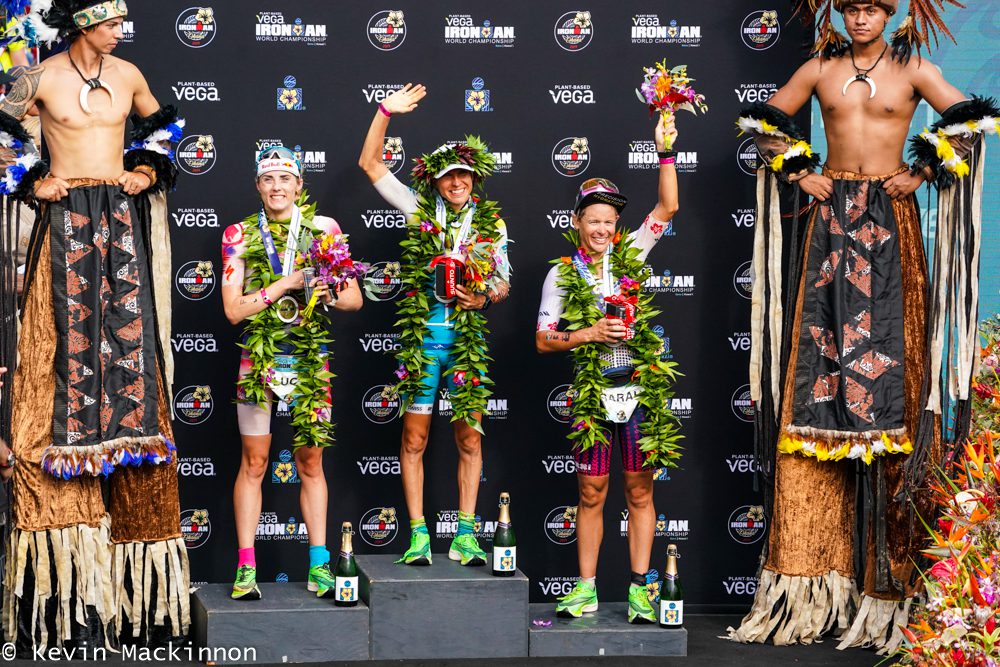
We would find out later that Ryf was suffering from a bug, but the rest of the women in the competitive field weren’t waiting around for the four-time champ to feel better. Charles-Barclay steadily gained time on the chase group that included Germany’s Daniela Bleymehl and Laura Philipp, Haug, along with Aussies Crowley and Carrie Lester. That group would enter T2 over eight minutes behind Charles-Barclay.
Charles-Barclay had spent much of the year working on her running, which she showcased through impressive wins at the Ironman African Championship in April and Challenge Roth in July. Haug, on the other hand, had done almost no running for much of 2019. After her third-place finish last year, she had tried some new shoes as she explored a potential new sponsor. She ignored some niggling aches and pains at her early season training camps, only to find that she’d torn her plantar fascia after Ironman 70.3 Abu Dhabi. She recovered from that injury, only to get a stress fracture.
All of which meant she found herself in need of an Ironman finish just to get back to Kona this year. Haug rolled into Ironman Copenhagen, the last qualifying race of the year, needing to just get across the line to confirm her spot. She’d only been running for four weeks heading into Copenhagen, so went into the race feeling like she might have to walk parts of the run.
There was no walking. She ran a 2:57 marathon and set a new course record of 8:31:32. That was the longest she ran heading into Kona – between Copenhagen and the world championship Haug managed one 22 km run.
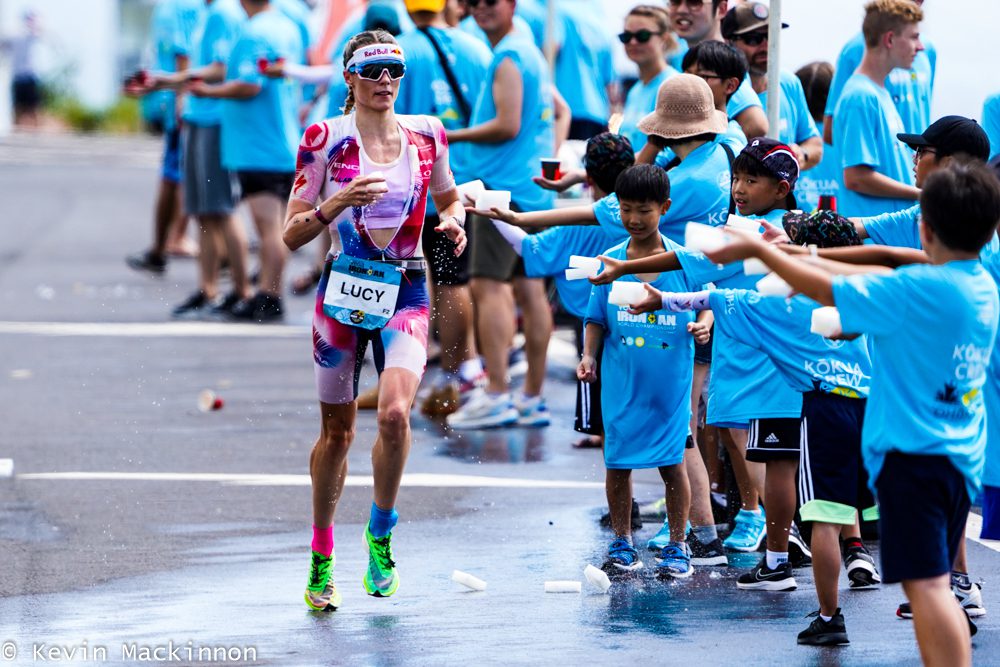
With all that in mind, an eight-minute lead seemed like it might be enough for Charles-Barclay to finally capture the title here in Kona. Then Haug started to run. Bringing back memories of Mirinda Carfrae, Haug looked like she was running a 10 km rather than a marathon as she flew along the course. Seven miles into the run the gap was down to five minutes. At 12 miles it was under two minutes. At 15 miles it was just 17 seconds. Haug made the pass and pulled clear of Charles-Barclay, who found herself being relegated to third a short time later when Crowley went by.
As Haug hammered through the rest of the marathon, Crowley and Charles-Barclay pushed themselves to their limits. Crowley started to cramp and Charles-Barclay retook the runner-up spot, hanging on in the end to take her third straight second step on the podium. Crowley would take third, as she did two years ago, with Kona rookie Laura Philipp from Germany finishing fourth and American Heather Jackson taking fifth.
Haug becomes the first German woman to win in Kona, an auspicious feat in a country that’s crazy about its Ironman racing.
“Your life is going to change when you get home,” Greg Welch said to Haug at the post-race press conference.
“I hope it won’t change too much, because I like my life now,” she laughed.
It might have been a long year dealing with injury, but for Anne Haug, life is pretty good right now.
Canada’s challenging day
It was not the day Canadian triathlon fans were expecting. Two of the four Canadian pros in the race were able to get to the finish line, but neither Lionel Sanders or Sue Huse had anywhere near the races they hoped for. They were the lucky ones, though – Cody Beals and Jen Annett both ended up having to pull out of the race.
Sanders appeared on track for another great day on the Big Island, coming out of the water shortly after Sebastian Kienle and Cameron Wurf, and then joining the super-cyclists as they barreled down the Queen K in the hunt for the lead. Unlike two years ago, though, the three weren’t able to ride their way to the front, hitting T2 over four-minutes behind Frodeno. Sanders seemed to be in solid form early on in the run, but things quickly unravelled and he would eventually limp into the finish line in 22nd.
Huse’s day went awry almost right from the gun.
“I think I swallowed so much water my throat and lungs were burning through the whole swim,” she said after the race. Huse was forced to hang on to a few paddleboards along the way, struggling through a 1:51 swim split.
“Usually when I get out of the water I’m ready to roll,” she continued, “but even on the bike and run I couldn’t get into a rhythm or get a pace going because I just couldn’t breath.”
Huse has decided not to race as a pro any longer, so was determined to finish her career with a finish. She also wanted to set a good example for her two sons.
“It was important for my kids to see that sometimes it doesn’t go as you planned, but you have to finish what you started,” she said.
“My whole triathlon career has been above anything I ever imagined,” she said. “I was so glad I crossed the finish line.”
“The Kona gods were not in a good mood for the Canadians this year.”
That wasn’t the case for Cody Beals, who had a mechanical issue with his bike and eventually dropped out.
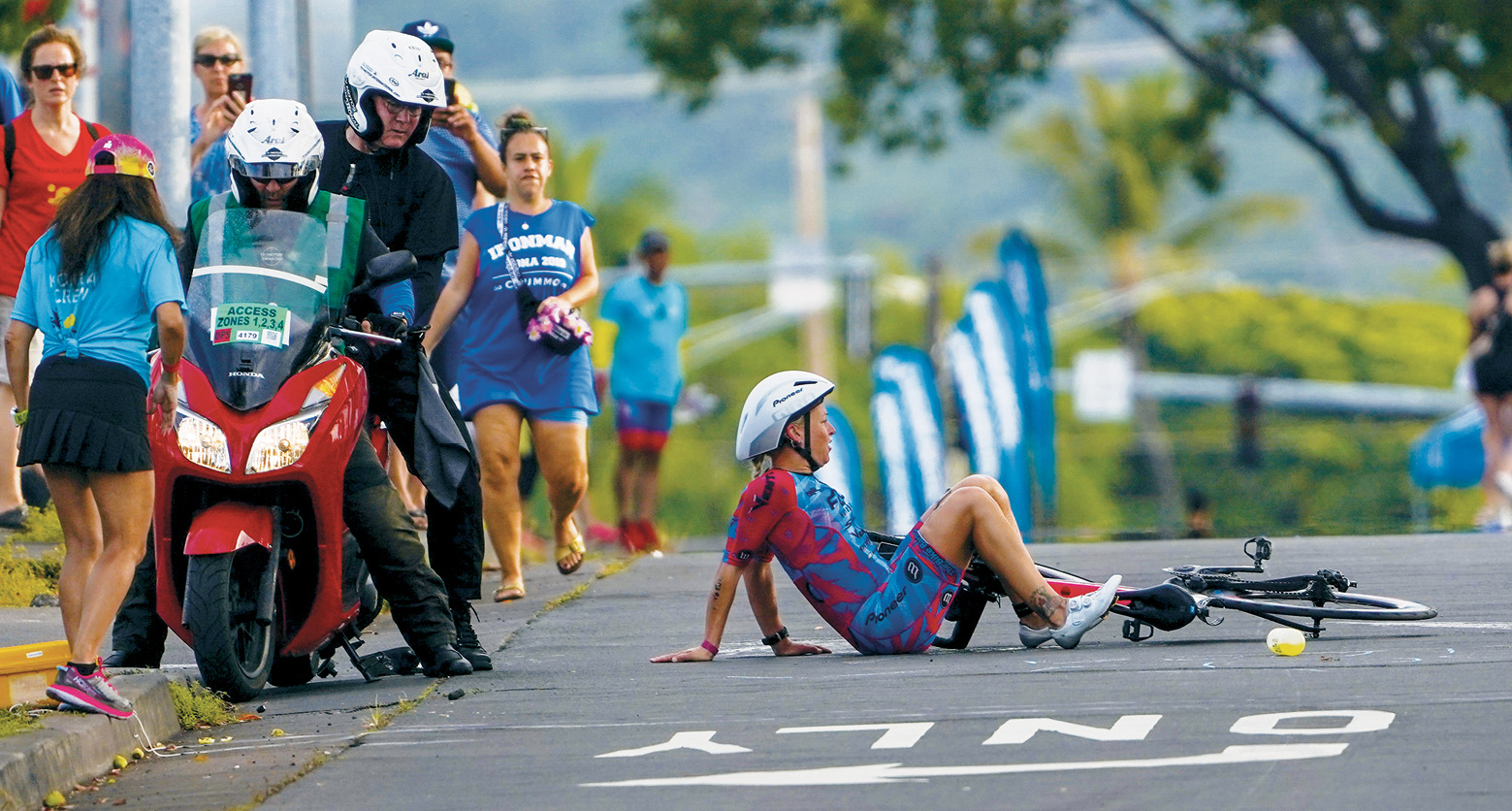
“A disappointing day in Kona,” he wrote on his Facebook page after the race. “I was riding in a solid position near the Hawi turnaround when an unfortunate and unprecedented mechanical issue related to some damage sustained during travel forced me to slow down and eventually stop. By the time I was rolling again, I had lost the pack and any hope of salvaging a good performance. In the past, I’ve chosen to finish my races whenever possible out of respect for my competitors. In this case, I was conflicted. The reality is that completing this race would have been a setback, physically, emotionally and financially. I’m not proud to say that I chose to be pragmatic today.”
Jen Annett was cut off by a media motorcycle early on in the bike leg. “We were coming down Palani,” she said later. “They were on my left. The guy suddenly slowed down and turned right in front of me. I did not have time to react at all.”
“Absolutely gutted to have my first ever DNF,” she wrote on her Instagram page. “After crashing into a motorcycle only a few kilometres into the bike, my day changed radically. My wheel was shattered and I was in pain, but adrenaline and stubbornness took over and I chose to keep going. I got my hands on a wheel and got back on my bike. I was doing OK until I got out to Hawi and the pain started setting in. I started fading on the way back, but still rode as well as I could…I decided to try the run anyways and thought I could tough it out. But, when I realized I couldn’t hold a decent pace and was forced to continually walk because of pain, I threw the towel in. Thankfully nothing is broken except my heart, just lots of bruising and soft tissue pain.”
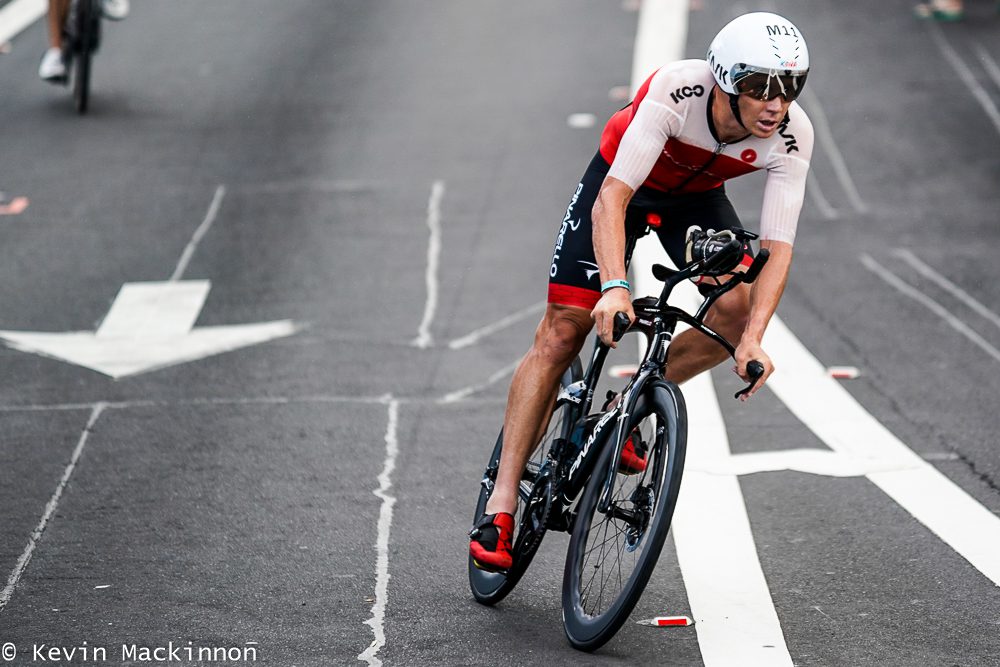
Thorsten’s Thoughts
Germany’s Thorsten Radde is the editor of TriRating.com, a site that ranks and rates athletes and races from major long-distance events around the world.
It wasn’t a good day at all for the defending champions – both caught a last-minute bug and had a bit of a fever on race day. For Patrick Lange, things got so bad that he was blacking out, and he ended his race 70 km into the bike after dropping out of the front and chase groups. Daniela Ryf was in her usual place after the swim, but then fell out of the big bike group once the pace picked up. A stomach bug made it a long day for her – she was still able to finish the race, but a 13th place finish is clearly not her standard. I’m sure we’ll see both of them back in Kona 2020.
“It wasn’t a good day at all for the defending champions.”
For Cameron Wurf, Sebastian Kienle and Lionel Sanders, the bike leg was almost a copy of 2017 when they rode away from the rest of the field. But there was one crucial difference: the swim lead group was still up the road, and Jan Frodeno made sure things stayed that way. The gap stayed between four and two minutes on the bike, and when Frodeno also posted the fastest run leg, he dominated the day. Tim O’Donnell was able to ride with Frodeno and also had a solid 2:49 marathon, his fastest yet in Kona. He was never able to threaten for the win, but he also was never in real danger from behind to lose his second place.
Kona rookie Alistair Brownlee was in the mix for the first six hours of the race, but he suffered when it mattered most. It was a similar day for Lionel Sanders, and they ended up within a minute of each other in 21st and 22nd. This allowed Cameron Wurf to claim two more big names on the run: last year he passed Javier Gomez, this year he ran by Brownlee and Sanders after about ten miles of the marathon.
For a lot of the athletes racing shortly before Kona, things didn’t go too well: Matt Russell struggled with a 3:07 marathon, Sarah True and Boris Stein did not finish. However, there is one athlete who raced in August and still did extremely well in Kona: women’s winner Anne Haug. Like Lionel Sanders, she was injured for most of the year and only qualified on the last possible weekend in August. But what a race she had in Kona: a swim with the big group behind Lucy Charles-Barclay, followed by a strong bike ride with the main group, where she occasionally even pushed the pace. For two years in a row she’s posted the fastest Kona marathon: last year it was a 2:55, this year an even-faster 2:51. Even though Charles-Barclay started the marathon with an eight-minute lead, she never had a chance against the fleet-footed Haug.
There were mixed results for the Kona rookies: the best result was a fourth place by Germany’s Laura Philipp in the women’s race. Philipp also had the fastest bike split among the female pros. On the men’s side, Chris Leiferman was able to finish in tenth place, just inside the “money slots.” Others, such as Imogen Simmonds, Els Visser, Daniel Baekkegard and Kristian Hogenhaug had “OK days,” with finishes between 12th and 18th. Some of the other rookies, such as Alistair Brownlee, Cody Beals, Franz Loeschke, Emma Bilham and Jeanni Seymour had obviously different expectations for their first race in Kona, but will no-doubt have gained some valuable experience.
The female race was a lot more dynamic this year, the late pass by Sarah Crowley and Charles-Barclay’s re-pass back to second is just one example of a truly interesting day of racing. But it wasn’t just because Ryf had an off-day – five sub-three-hour marathons and eight sub-nine-hour finishes indicate the increased depth in the women’s race.
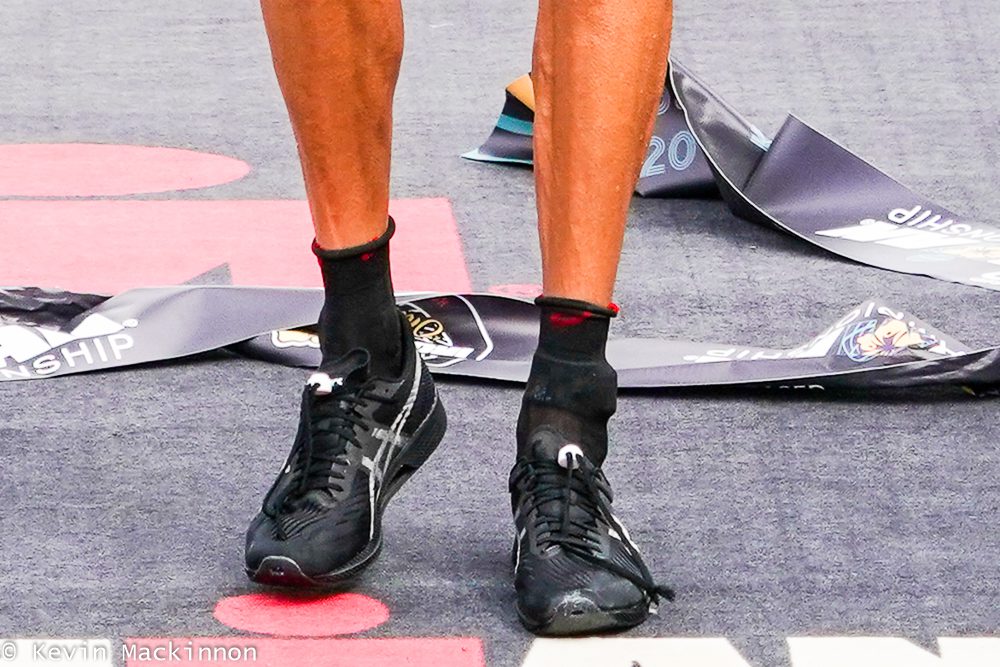
Gear Talk
As always in Kona, there was quite a bit of chatter about equipment improvements. Custom armrests were brought to the next level with Jan Frodeno’s 3D-printed custom cockpit, with a rumoured cost in the five-figures. On the back of the Breaking-2 project, Anne Haug made a last-minute decision to change her running shoes, apparently never having run more than an easy training run in them. Jan Frodeno also had to look for new shoes when slight changes in his run form led to blisters – he was running in hand-built prototype shoes that he didn’t allow anyone to touch before the race. At least he had done his last two longer runs before Kona in them.
From a country perspective, Germany continues to dominate the long-distance scene, this year claiming both the male and female titles and placing five athletes in the top 10. The U.S. also had five top-10 athletes. Next up were the Australians and the British, with three athletes each. These four nations also had the most pro starters in Kona: 60 per cent of the pro field (56 out of 94 starters), and 80 per cent of the top-10 finishers.
“From a country perspective, Germany continues to dominate the long-distance scene.”
The “Golden Rule” for Kona winners continues to hold: the winner either comes from last year’s podium or has been a winner in recent years. Haug was third last year, Frodeno was a winner in 2015 and 2016. Based on this rule we can already create a short-list of potential 2020 Kona winners: Frodeno, O’Donnell and Sebastian Kienle on the men’s side, and, on the women’s side Haug, Charles-Barclay and Sarah Crowley. In addition there are the 2017 and 2018 champions Patrick Lange and Daniela Ryf, who will be hungry to reclaim their Kona crowns.
At the time I’m writing this, it’s only 363 days until race day for Kona 2020…I can’t wait!
This story originally appeared in the November/December 2020 issue of Triathlon Magazine
